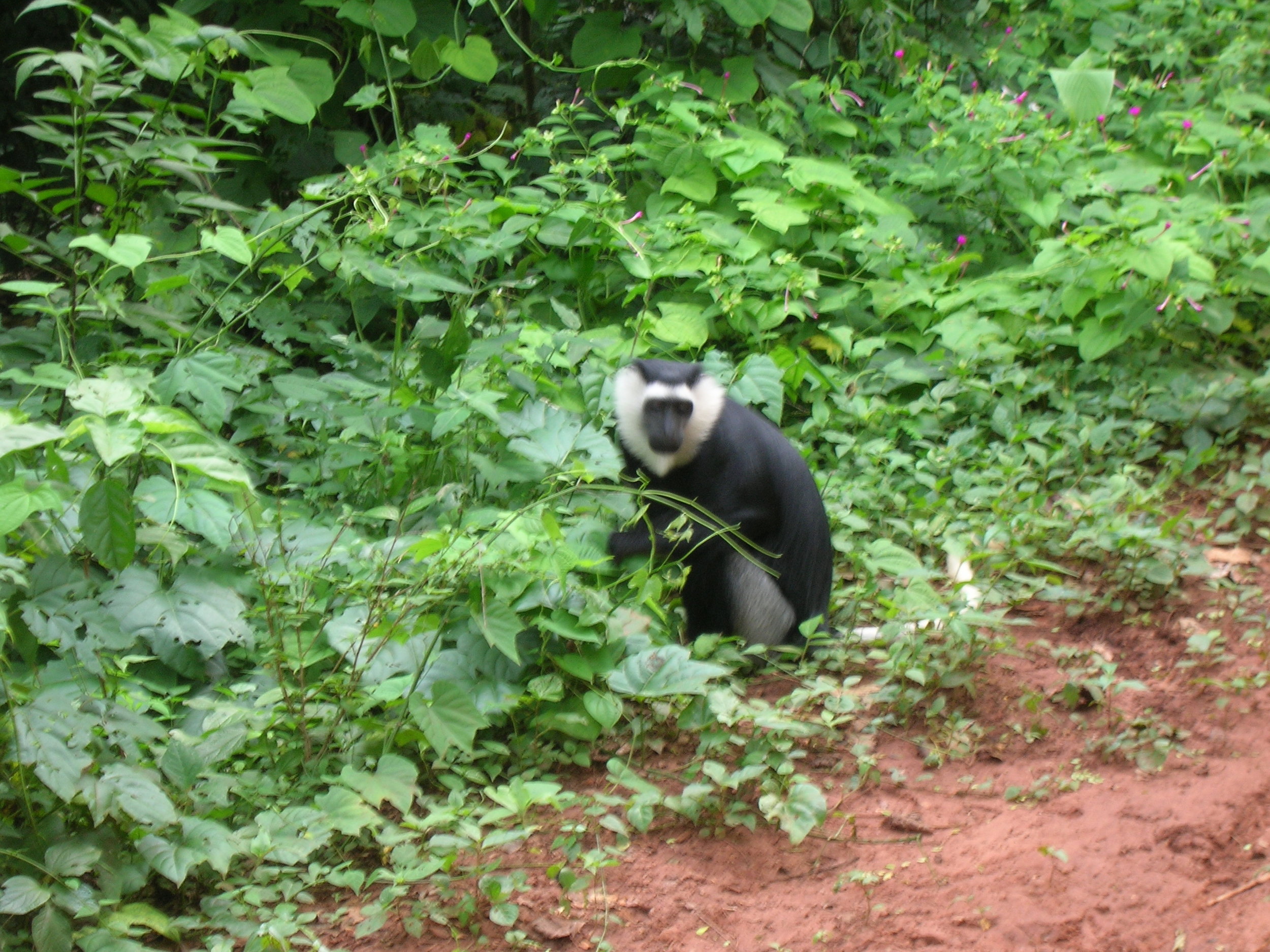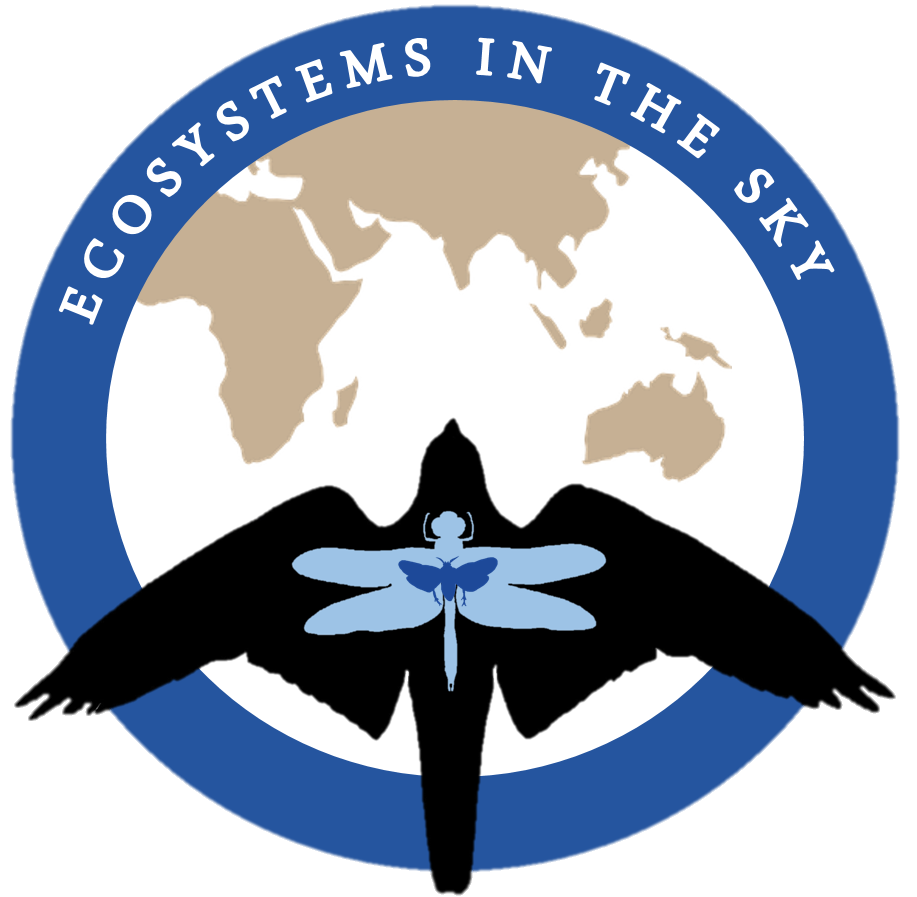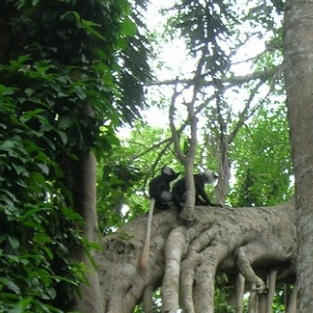Behavioural ecologist
My research interests lie in Behavioural Ecology, where I have studied social interactions in gregarious mammals, bird migration and effects of environmental change and climate change on phenology in birds. Currently, I am studying ecosystems in the sky, focusing on the migratory interactions, aeroecology and migratory behaviour of birds and insects.
Alongside research, I am also interested in conservation. I have extensive experience in conservation management, having worked in policy and practical management of protected areas and protected species for governmental institutions, and by contract by the European Commission DG Environment.
Ecosystems in the sky
Migration is a fundamental natural process, involving periodic mass movements that redistribute species, species interactions and biomass on a continental scale, with impacts of nutrient and resource transfer affecting ecosystems and societies worldwide. However, great gaps remain in our understanding of the structure of migration system and the complex species interactions that are essential for their development. I am using a highly novel multi-species approach and cutting-edge radar and satellite techniques to map a largely undescribed migratory flyway of migrating micro- and macro-insects and birds that fly over the Indian Ocean, connecting India with East Africa. This ecosystem in the sky contains the world’s longest migration scaled to bodysize, the globe skimmer dragonfly’s (Pantala flavescens). And it is suggested that another champion migrant, the Amur falcon (Falco amurensis), has evolved to use the Indian Ocean Flyway (IOF) just to hunt this insect. Currently these ecological links are unexplored and present an outstanding opportunity to investigate migration in an eco-evolutionary framework. Key aspects of the IOF that remains unkown include: the spatio-temporal scale of the IOF biomass exchange, species interactions during cross-ocean migration, the effects of wind and aeroecological adaptations for transoceanic migration. I aim to bridge these knowledge gaps and increase awareness of airborne ecosystems and their socio-ecological effects.
Links:
Conservation
On Gotland, traditional agriculture is still common, creating refuge for many species that have become rare or extinct on mainland Sweden
Once, forest fires were common in Sweden and many species that relies on them have become rare as industrial forestry has taken over. With conservation burning, fire-affected habitats can be re-created.
It has always been my conviction to work for the long-term protection of species and their environment. This engagement has lead me to work in a variety of positions in conservation management, from consultant in ecology in France writing material for environmental policy development for the EU, to local conservation manager on the island of Gotland for the Swedish County Board (Länsstyrelsen), and most recently, as conservation specialist evaluating management needs in protected areas for the Swedish Forest Agency (Skogsstyrelsen).
Alongside professional duties in practical conservation and environmental policy, I have a keen interest in engaging the public in learning about the environment, particularly people who do not regularly “go out in nature”. I find it especially fun and rewarding to work with different kinds of media and communicative initiatives. This website is an attempt to present my research in a popular-science way, and in the past, I have worked with the Swedish Society for Nature Conservation (Naturskyddsföreningen) in an initiative presenting teachers and their students ways of learning while playing in urban nature. For the Swedish Forest Agency, I also wrote and edited educational material for forest owners, giving advice on how to implement conservation measures while managing their forests.
Just recently I joined the newly initiated conservation science group Conscience at University of Exeter, a collaboration of researchers striving to support good conservation practices in developing countries, guide and teach new conservationists and dissemination knowledge.
Effects of land use change and climate change on migrant phenology
Willow warbler male, Gotland 2012.
Land use-change: historic map (year 1900), digitalised historic map and present-day map (year 2013)
Climate change is shifting the timing of seasonal events by increasing temperatures. Spring arrives much earlier now than it did 20 or 30 years ago. Many organisms have time important stages of their life to match seasonal conditions, something that is called phenology. Birds that migrate have evolved to arrive at their breeding grounds when temperatures are mild enough for them to survive and for insect prey to emerge, and preferably peak in abundance in time for the bird’s offspring to have hatched. Recent global climate change has occurred very rapidly, preventing many migrant birds to respond quickly enough.
During my PhD I investigated shifts in migratory arrival and departure, and egg-laying dates in the long-distance migrant bird the willow warbler (Phylloscopus trochilus). I could show that the willow warbler had responded to earlier spring by shifting its entire breeding cycle to an earlier starting date. However, this response was restricted to willow warblers breeding in southern Sweden, whereas those breeding at higher latitudes had not changed the timing of their migration irrespective of the fact that spring was earlier also in their region.
Willow warblers breeding in northern Sweden also showed a abnormal breeding site behaviour. During the four years I monitored willow warblers around Abisko nature reserve, not single individual returned to breed at the same place. Site-fidelity during subsequent years of breeding is known as philopatry, and usually, about 20-50% of willow warbler males come back to breed in the same territory year after year. To investigate this finding further, I continued my studies of northern-Swedish willow warbler for another two years after my PhD.
Alongside willow warblers, I analysed spring migratory phenology in 14 additional bird species using historical records dating back to 1873, and comparing those records to current ones. The study confirmed that arrival had advanced also in these species, and that this advancement started simultaneously with recent climate change.
Using historical records of land use, I could also project three different time-scaled scenarios of territory availability for willow warblers and chaffinches (Fringilla coelebs). This analysis was preformed with the help of digital maps, one historical from 1900, one present from 2013 and a third, projected climate change scenario for 2100. The results showed that pre-industrial Sweden had the potential to sustain a much larger population of willow warblers than present day Sweden, whereas a future landscape with a higher turn-over rate of forestry would potentially be positive for the species. For the chaffinch, the change in land use between 1900-2013 had little effect on territory availability, but just like for the willow warbler, a future scenario with a increased turn-over of production forests could potentially be beneficiary.
Social interactions in mammals
Colobus monkeys grooming each other, a very important social adhesive in a primate group.
In the majority of group living mammals, males and females only interact during reproduction and live separate lives for most of the year. In stark contrast to this, most primate species have permanent male-female association, living in mixed-sex groups all year around. The continuous presence of resident males in the social group can have significant impacts on female fitness, both in forms of costs and benefits. To study the effects of resident male presence on females, I collaborated with a Canadian primatology group researching social behaviour in a small population of black-and white ursine colobus (Colobus vellerosus) in Ghana.
Links:
Living with males: benefits and costs to females of resident males in Colobus vellerosus
Colour-communication in squid
I have always been interested in communication in animals; how, why and when individuals communicate amongst themselves and across species boundaries. From a human perspective, some forms of communication in the animal world appear very familiar, like vocalisations and facial expression, whereas others, like chemical communication and echolocation, are more difficult to comprehend.
The Caribbean reef squid (Sepioteuthis sepioidea) is a social animal and can live in groups of up to 30 individuals. Animals that are gregarious and live in groups need ways in which to communicate, for example to avoid unnecessary fights or to coordinate foraging. And in the reef squid, the language of choice is colour.
By using chromatophores, which the squid can control though its nervous system, it can rapidly change the colour of its skin, and also the skin’s pattern and texture. The colour changes can be used as camouflage, to scare of predators, but also in courtship rituals and in social interactions.
In 2019 I participated in a pilot study investigating group behaviour and group communication in Carribean reef squid in Bonaire, Dutch Antilles. The team, consisting of researchers from Stockholm University, University of Helsinki, University of Exeter and Cambridge University, managed to collect several hours of video recordings under an intensive research effort, and the analysis is underway with updates coming soon!
Read our review paper on anti-predatory behaviour in cephalopods (the animal class of squid, octpous, nautilus and cuttlefish):
The evolution of predator avoidance in cephalopods: A case of brain over brawn?
Photos from field work on williow warblers
Field sites include: the island of Gotland in the Baltic Sea and Abisko, northern Sweden, 2011-2014.
All photos are taken by Johanna Hedlund and are under cc license





















Photos from field work on ursine black-and-white colobus monkeys
The field site was located in central Ghana, west Africa, in the Boabeng-Fiema Monkey Sanctuary, 2007.
All photos are taken by Johanna Hedlund and are under cc license


























Photos of dragonflies
Photos are taken in Cornwall, Latvia, Sweden and in natural history museums.
All photos are taken by Johanna Hedlund and are under cc license







































